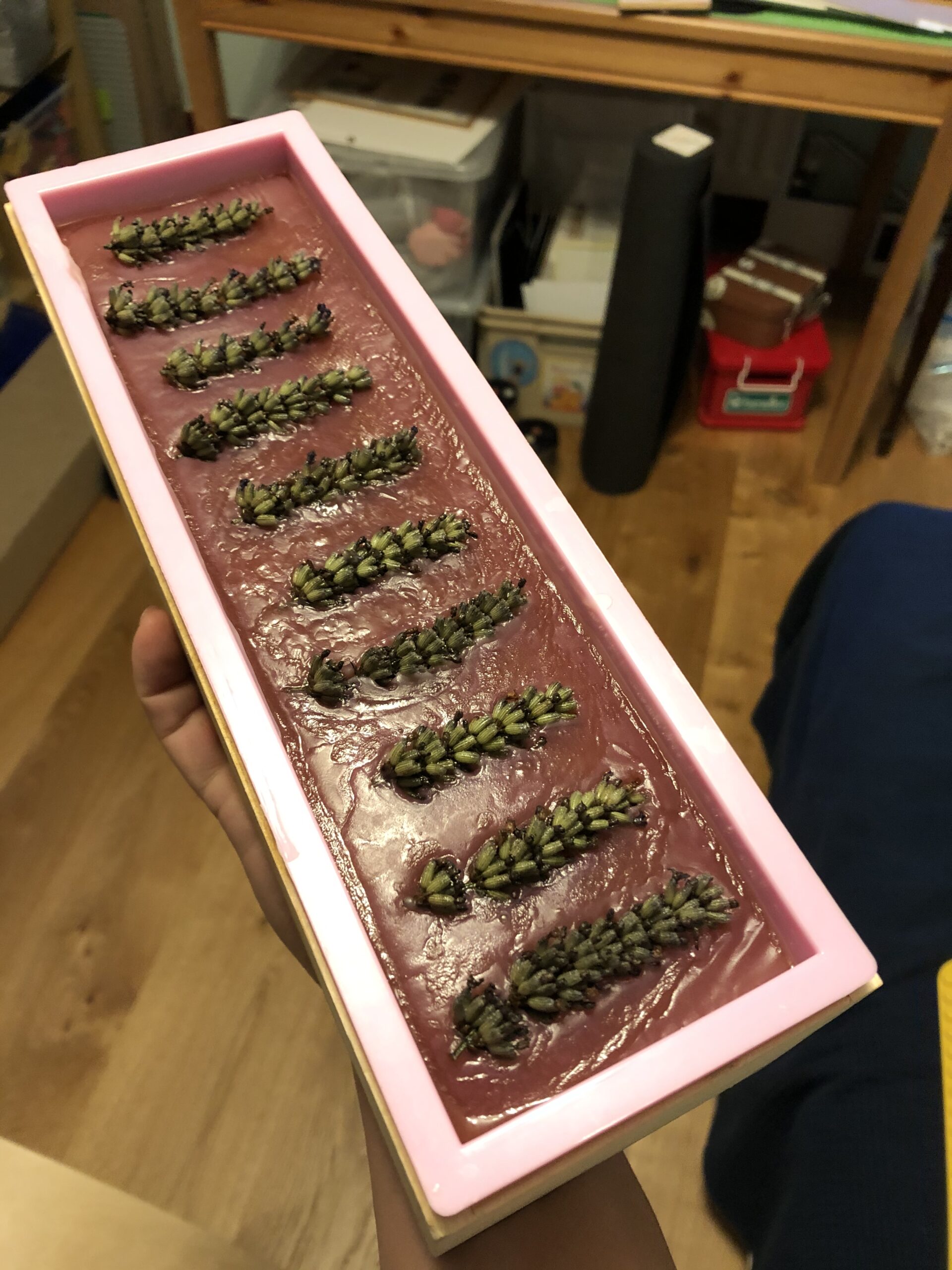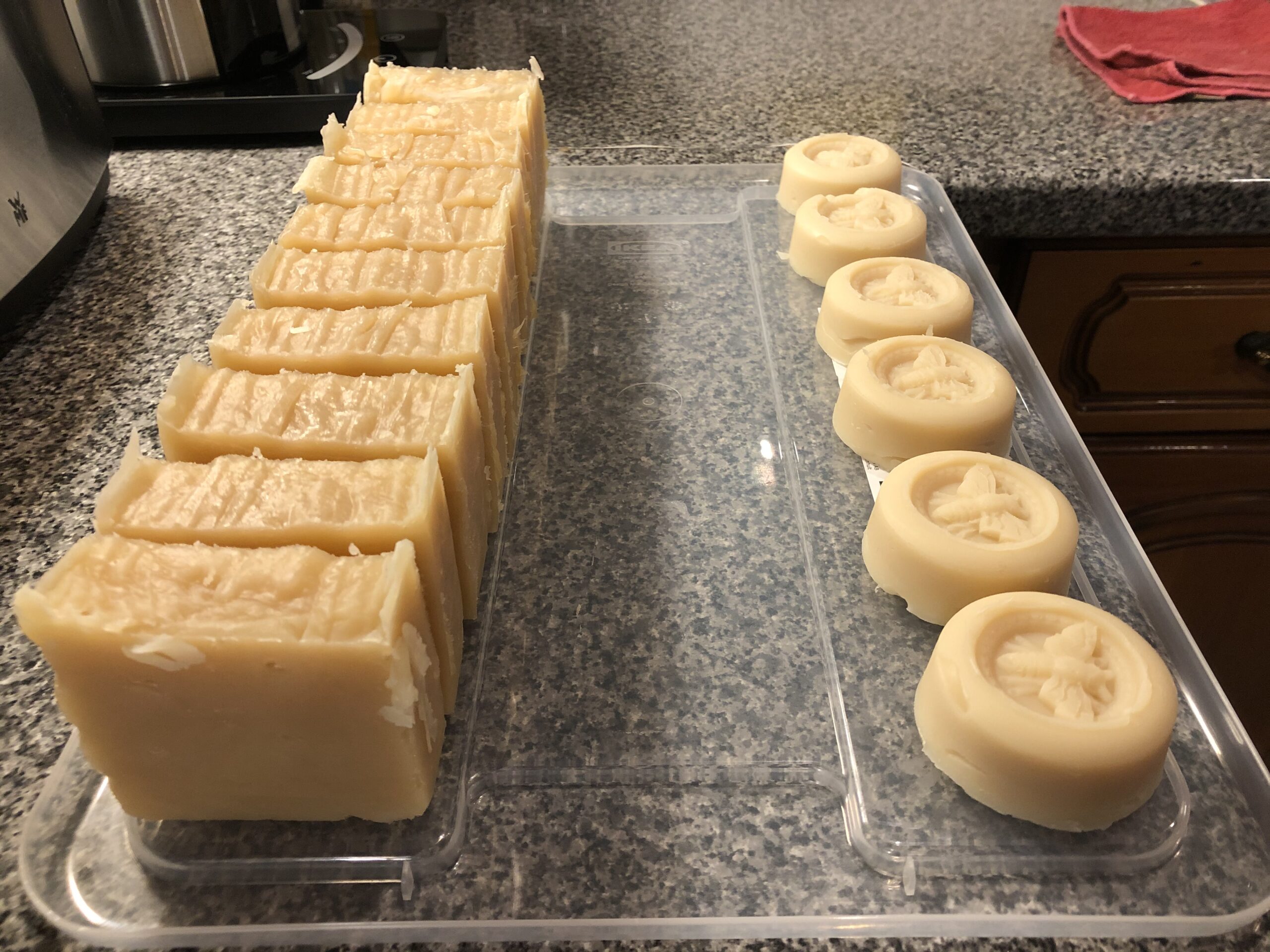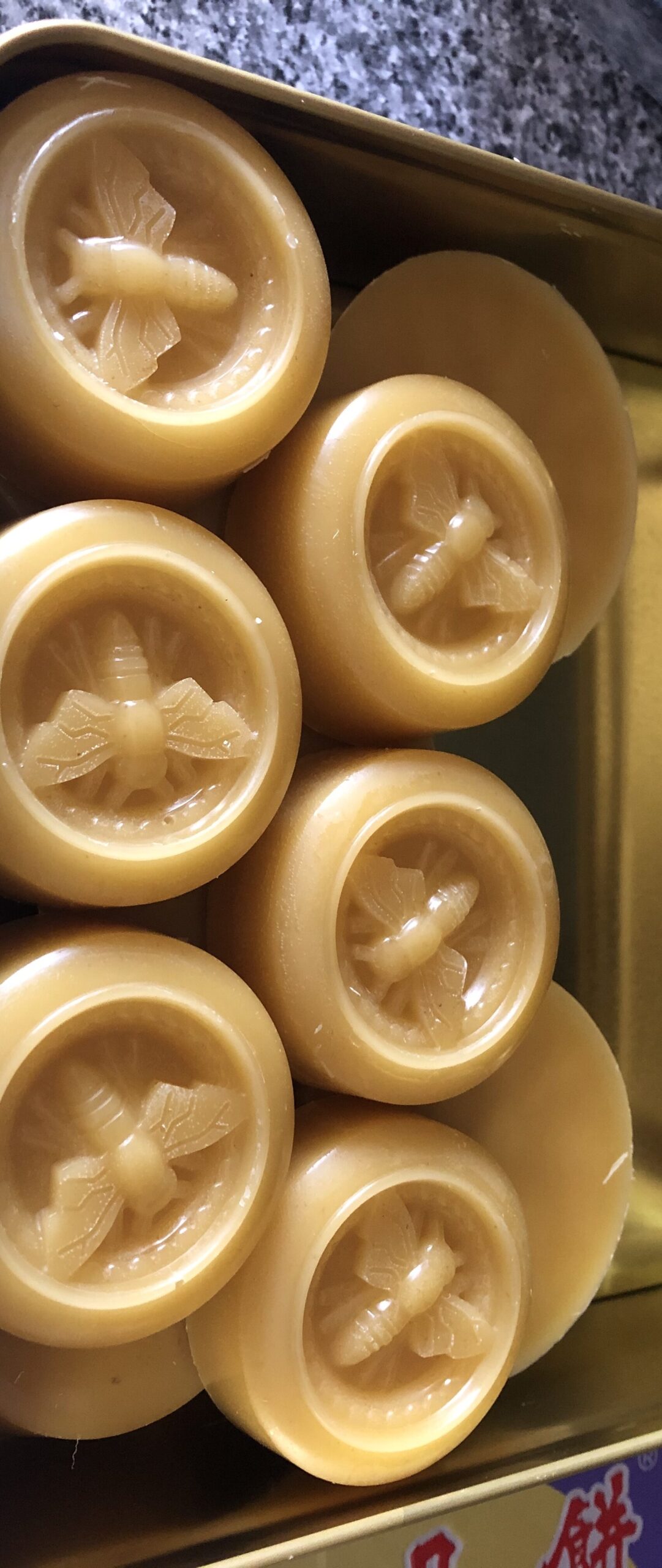With the 650g rendered from our first harvest, we have been exploring ways of using beeswax. Of course, an obvious way, considering the current energy crisis and threatened planned blackouts in the UK, is to make candles. But we didn’t. Instead, we were actually waiting for the beeswax for another do-it-yourself veture: cold process soap.
We had previously made melt and pour soap as gifts and for our own use, but beeswax is unsuitable for this process. So we were left with two options: hot process or cold process soap.
Fundamentals of soap-making
Saponification describes the reaction where triglycerides are combined with a strong base to form fatty acid salts (soap). This is achieved with sodium hydroxyxide (NaOH). Soap making is generally divided into hot and cold process.
In hot process, the raw materials are mixed and heated. This forces the mixture to go into gel phase, before settling. It makes soap which is ready in less time.
In cold process, the raw materials are mixed but not heated. Most of the time, gel phase is prevented. However, when honey or sugars are added to the mix, the temperature of the mixture rises. Similarly, because beeswax melts at 65C, the mixture has to be above this temperature to avoid the beeswax solidifying before mixing.
Our process
After some research and calcuations, and sourcing all relevant equipment and materials, we began our learning journey. We followed the cold process method, but forced a full gel phase through insulation. Oils used were mainly coconut and olive, but with addition of castor oil. The oils and lye was mixed at around 60-65C, followed by honey and fragrance. A stick blender helped to get it to trace. The mixture was then poured into a silicon mold and left to cure for between a few days to a week. It was then cut and left to cure for a further 4-6 weeks.

The verdict
Both soaps were very nice to use. They lathered well, and cleaned without drying the skin. The fragrance was lovely, and did not linger after the shower. The bars with the castor oil were very slightly softer.


